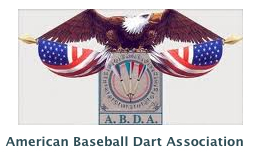Ok, the title of this article may be a little bit much. The truth is, most people play in a dart league well before they ever get involved with running one. And, by the time it’s their turn to take up the reigns, all of the procedures are pretty much sorted out.
But – I do get questions from people who are starting to play American darts in a new setting. Say, a corner bar in Colorado. And they’d like to organize some play. Something like hosting a small in house league.
The following are some things to consider when putting together a league. These are not rules, just ideas. Take whichever ones you like, and put them into motion. Leave the ones you don’t like behind.
What Kind of League Will It Be??
Is it a beer league, where playing darts is “what you do while drinking beer” on a certain night of the week? Or is it a place where everyone should bring their best game because there’s money to be won! Or something in between?
The saying is “Relax, Have Fun, Play Darts!”. If the competition isn’t level, the folks who end up losing too often can decide there are other, more fun, ways to pass time. I’m a fan of beer leagues, and serious tournaments. Although I enjoy tournaments that are for fun as well.
You should decide if you want it to be a men’s league, a woman’s league, or mixed. I’ve seen all three be successful.
Team Size
Obviously, this will depend on several factors. How many people do you have? How many dartboards do you have? How long do you want to be shooting?
Every place is different, but for our leagues it takes about 50 minutes for 2 teams of 5 players to shoot 9 innings. The league used to be 7 players per team, and probably lasted slightly over an hour per game. We play 3 games a night.
If you are short on boards, you can plan on having two starting times. I shot in a league that had only one dartboard. There was a 5 o’clock game, and a 7 o’clock game on Sunday Nights.
What Game Will You Shoot
For most people, the answer is Baseball or “1 to 9”. But, that’s not the only answer. I’ve seen leagues that shoot three games per match, and each game is different. So, if there is a favorite game where you are shooting, you certainly do not need to abandon it for Baseball. The idea is to have fun.
Level Competition
Players want to have the chance to win. We try drafting fair teams, and then letting them just have at it. But other leagues try to create better competition by adding scoring regulations. Here are some of the techniques they use:
Handicaps – this requires that you have averages for your players, and that may not be the case when you are starting out. But, if you have them, you take the team’s average scores. And then you apply a handicap percentage to find out how many points to award the lesser team, to make the match more competitive.
Let’s say you’ve chosen 70% as the handicap. that’s a typical number to use. Team A averages 200 points per game. Team B averages 150 points per game. If they just shot their averages, Team A would win by 50. Hardly competitive. So, with a 70% handicap, we take those 50 points, multiply it by 70% and get “the spot”. 50 x .70 = 35 so Team B gets a 35 point spot. Now things just got more competitive.
Drop Low Man – it’s exactly what it sounds like. If you have 6 shooters, only count the highest five scores. So, if someone ends up working a jackhammer all day and their darts fail to reach the board, that won’t kill the team for the night. And, it allows lesser shooters the chance to sign up for the league without fear of ruining the team score. Low score gets dropped.
Some leagues use both handicapping AND dropping low scores. Whatever you feel comfortable with, and helps bring better competition into your league.
Food
You can decide to have it, or not. Much of it will depend on where you are shooting. If the host location does not have kitchen service, you may think about putting together a crock pot of something every week. Perhaps the host will provide the food. Perhaps you can have people take turns preparing simple recipes. And, you may want to consider having the costs come from a league fund.
Money
If you have a “league fund” you can pay for food from it, use it for a year end party, buy trophies or shirts, or any number of things. You can add to the fund any way you’d like.
- Dues – weekly dues can be as little as $1
- Fines – there could be fines for being absent, or other “infractions”. We set up nominal fines for scoring 1 point in an inning ($.10) or throwing zero for the inning ($.25).
- 50/50 Drawing – which may or may not be legal depending where you live. If you don’t know what a 50/50 drawing is, then don’t worry about it.
Or, you can decide not to have a league fund and keep it all very simple.
Stats and Averages
For the leagues that play nine inning Baseball, keeping track of player’s scores and averages is pretty standard. In fact, you can often submit the year end averages to the ABDA. This will give players an “official average” should they wish to compete in tournaments elsewhere.
Stats are even fun for “in house” use. The crew from the Twin Valley Mountain Dart League have the most in depth stats I’ve seen.
Tournament, Party or Banquet
If you’ve generated a League Fund, you may consider having a end-of-the-season party. This can simply be food and drink. Or perhaps you’d like to combine that with a friendly dart tournament?
The local leagues tend to run High/Low, or High/Middle/Low year end events. To have a high/low tournament you can either take the player with the highest average and pair him/her up with the player with the lowest average. And then continue with the second highest/second lowest averages, etc.
Or, you can designate players as having “high” averages or “low” averages (or for three man teams create a “middle” average class as well. And then randomly draw names creating teams in that manner.
Supplies
Darts and a Board. The darts should be fresh, and the board should be played on already. Darts tend to drop out/bounce off of brand new boards at a higher rate, so you generally try to break a board in before the season starts.
Scoresheets
Generally, score is kept on sheets rather than using a pegboard or the scoreboard on a cabinet. This is for a lot of reasons, not the least of which is that by writing the score down, you can keep averages for each of the players in the league.
There are printable dart scoresheets on this site.
Schedule Maker – you can find them online, or I have one that may help.
Tidbits:
Remember, these are not hard and fast rules, but possible solutions to typical questions.
- Who keeps score? – The HOME team provides a scorekeeper for the match.
- Who shoots second? – The HOME team shoots second in every game of the match that they are hosting.
- White Horses (or 9’s) – When someone shoots a White Horse, every player from both teams in that game reward him with $1. And the bartender pours him a shot on the house. You may want to set up a rewards system for perfect innings as well.
- Beer Frame!! – this tradition has fallen by the wayside a bit, but we used to designate one inning (the 6th inning of the 2nd game) as the BEER INNING. The team scored more in that inning received a pitcher of beer from their opponents.
- The Throw Line – a lot has been spoken about this. Read my article on setting up an oche for American Darts.
- Side Event – There are several side events you can run during the league. I will describe some of them in an upcoming article.
HELP:
I am SURE that there are other ideas involved in setting up a dart league that I haven’t mentioned. If you have anything you would like to have added here, send me a line – webmaster At americanstyledarts.com.
And remember that this is just some help in setting up an in house league, usually for those who are spreading the game to new areas. For advice on how to set up a league that involves several teams from several locations, you’ll need to create an entity. There is a checklist for this at CyberDarts.
And on the topic of dart leagues, George Silberzahn (if you haven’t heard of George, he is a man who is GREAT for the darting community!) wrote a piece describing The Ideal Dart League.







Do you think we could have our records made official by some wooden dart organization? I’ve been president of our league for 30 years as we’ve been shooting #2 Apex woodies on our “American Boards” (2 & 1 point scoring areas only) in a league since 1969. Your max “White-horse” (9 points), is equivalent to our max “turkey” (6 points). We originally shot on Toohey Boards from Cohoes NY back in the 70’s and I still have one. Seems a shame all those records and accomplishments would go unknown.
BTW, I’ve watched all the old Big Dog videos and really enjoyed them. Nice work, and I like the background music. I also shoot Widdy, breaking in a new board now, averaging around 45, while having a 30+ average in our dozen team Tuesday night baseball league for over 30 years.
Hey Joe, I was hoping someone would have chimed in with an answer for you by now. I think perhaps the best bet is to be the change you want to see. You’ve done dutiful record keeping, do what you can to make it available to the public and put you own stamp of integrity on it.
I know that Keith has been brooding through records from old dart leagues, and he posts the shining examples that he finds on the Facebook group (https://www.facebook.com/groups/132367716803814).
you may also want to consider posting the question over there, as there are more people willing to chime in with advice there than here.
averaging 45 is top-notch shooting!